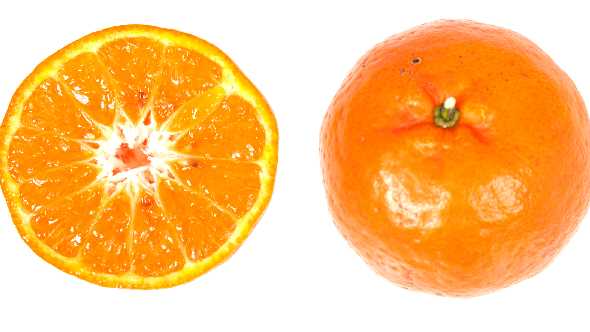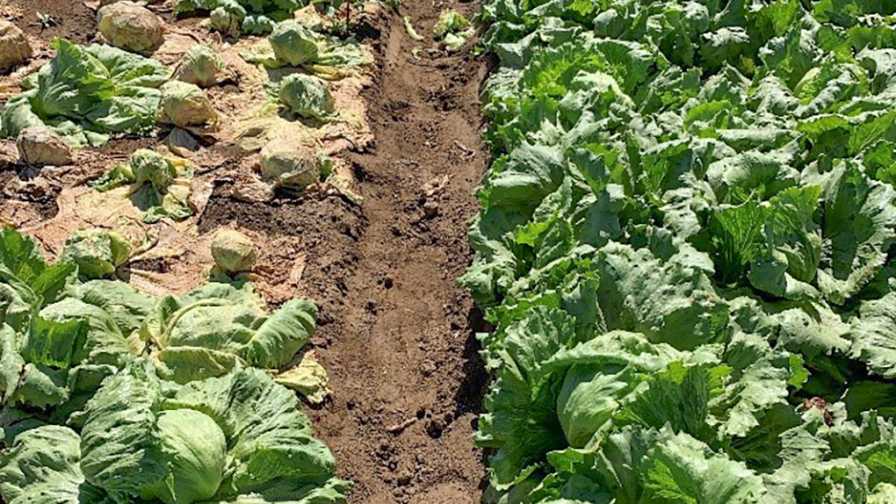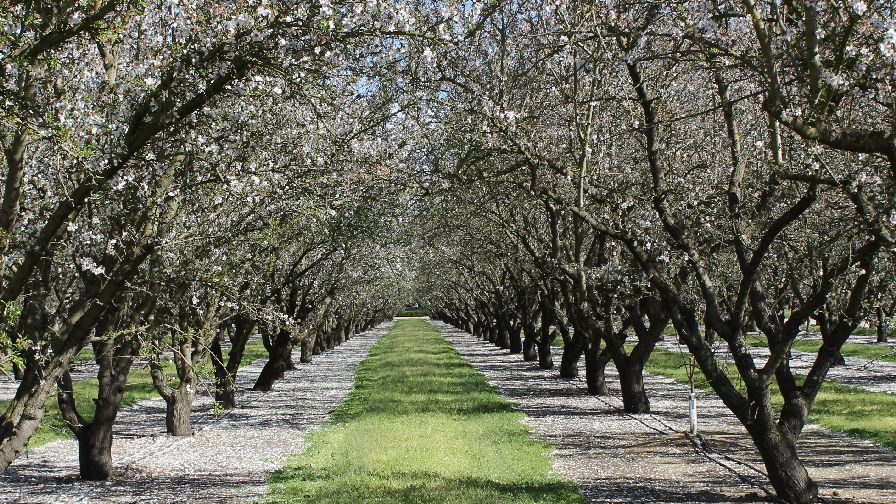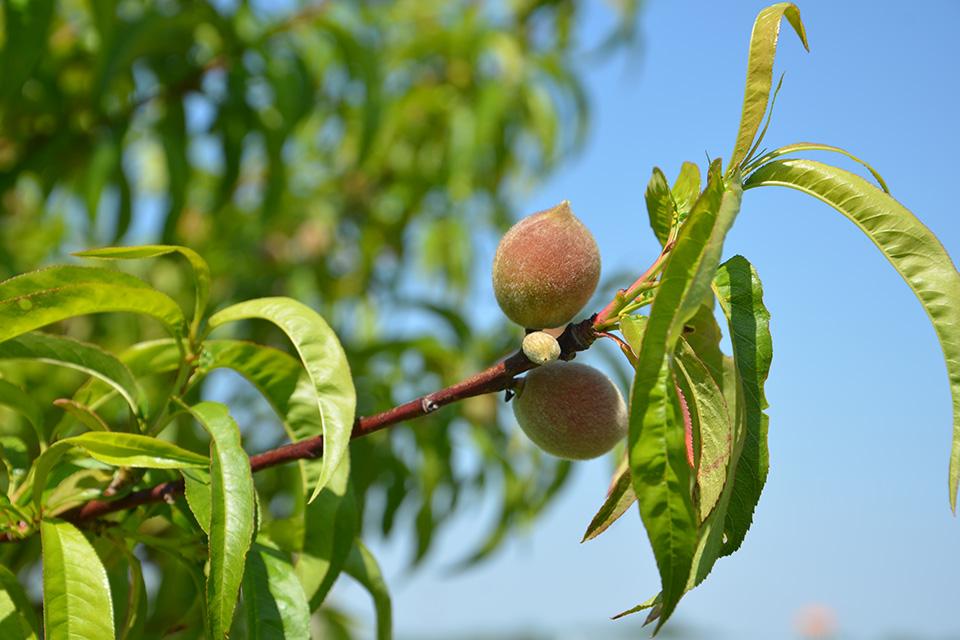Experimental Florida Mandarins Measure Up
Florida’s citrus industry could fill a book with unusual descriptors, labels, acronyms, and nicknames. Before now, the word “pudding” would not likely have been invited to the party. This may have changed last fall when the UF/IFAS Plant Improvement Team displayed a collection of its latest experimental mandarin selections. When one is seeking proof that continued support of intrastate citrus breeding programs is producing world-class results, with the potential to improve the competitive position of the Florida citrus grower, one may have to look to the pudding for an answer.
Each variety display day has its winners and losers. Already this season, participants have been treated to exciting early sweet oranges for processing, dark red seedless grapefruit, late-season grapefruit, and numerous seedless mandarin hybrids. The November variety display, held at the Citrus Research and Education Center (CREC) in Lake Alfred, presented a unique opportunity.
Four new UF/IFAS mandarin hybrid selections appear to exhibit the target traits and characteristics demanded by today’s discriminating consumers. The decision was made to seed the display with a market leading branded clementine to provide a realistic basis of comparison. Participants sampling fruit were not informed of the blind test. All mandarin selections were displayed in like manner, each with whole and sectioned fruit for peeling and tasting. Each was given a code name for identification purposes.
Picking A Winner
The process of evaluating all selections presented at a typical variety display takes 45 minutes to an hour. Some people evaluate everything presented, while others focus only on certain fruit types. The events start promptly at 10 a.m., as people enter the hall, grab their clipboards, and plan their route. Most displays contain a mix of new material (never before seen) and selections displayed at previous events or in past years. Those evaluating specialty selections are asked to evaluate each selection for peelability, flavor, internal and external color, and the overall convenience of the eating experience. It goes without saying that the competition is supplying attractive and convenient seedless mandarins throughout the season. Flavors range from variety to variety, but on average, the competition has set the bar high.

As participants progressed through the November display tables, crowds began to accumulate around certain selections. People started to exchange notes and call friends over for a closer look. Cell phone calls were made and more participants filled the hall. Excitement was certainly brewing. Survey sheets were collected and analyzed. As the chart above indicates, four of the experimental UF/IFAS selections dominated the event, substantially out-scoring the branded clementine in all categories. One of the selections (“D”) fell short on peel color, as it was actually displayed with a greenish-orange color. Two weeks later, “D” broke color and turned a uniform orange. Had selection “D” been displayed with full color, the four experimental selections would have scored a clean sweep.
What does this tell us? The base characteristics of these selections can compete in the marketplace. It tells us that we are on the right track. What questions remain?
- What about productivity? Will the tree produce a viable crop?
- Are the trees susceptible to the myriad of pest and disease issues present in Florida?
- Does the fruit perform well postharvest? Does it have a good shelflife?
- Rootstock compatibilities and other horticultural questions
Therefore, these selections will soon move to experimental grower trials through the FAST TRACK program, where all of these questions will be answered. This process is well under way.
Do I Hear Bingo?
One of the four mandarins in the competition garnered the most attention. Selection “C” was first displayed in December 2013. It was very popular in its debut performance. So much so, that budwood of selection “C” was entered into DPI for clean-up in January 2014. There is one single producing tree of this selection. It is roughly seven years old and growing on the Ridge on its own root. It is showing virtually no symptoms of HLB in its canopy or fruit. Photos of the tree were shown at this year’s display. When considering the outstanding fruit quality and potentially enhanced HLB tolerance, one survey participant scribbled the word “BINGO” in the comment line. If this selection turns out to be everything we hope it is, this may indeed be a winner.

Photo courtesy of UF/IFAS Communications
NVDMC has worked with FNGLA and Florida Foundation Seed Producers Inc. to accelerate budwood increase of this selection prior to the announcement of its availability through FAST TRACK. Several growers have expressed interest in moving this selection directly to commercial production, bypassing the experimental trial stage. While there are many things not yet known about this selection, some growers feel it has more to offer than other varieties currently available.
Sufficient budwood of selection “C” will be generated to produce trees for FAST TRACK experimental trial and early commercial production, if the commercial option is elected. Once this is accomplished, it is entirely possible the next trees will go out as rooted cuttings. The tree seems to do very well in an HLB environment on its own root, and some growers and nurseries feel this may offer the best chance of retaining apparent tolerance. Rooted cuttings have their pros and cons. The tree only has been observed in Ridge sandy soils and we do not know how it will perform on its own root in Florida’s Flatwoods or Indian River area.
All of the pieces are now in place to rapidly identify highly promising selections and bring them to the grower as rapidly as possible. This would not have been possible without base support of the breeding program and NVDMC.
Options Abound
As state and federal research efforts continue the full court press for answers to HLB, growers and nurseries will have access to new oranges, grapefruit, and mandarins. Some will be available for experimental trial, others for commercial production and others just for budwood increase. Nurseries are encouraged to remain abreast of the latest developments and register for budwood whenever possible. Things will be changing quickly in the months ahead. Growers will look to their nursery to supply the most promising material (rootstock and scion).










